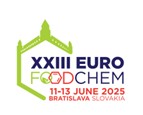Scientific journal
Journal of Food and Nutrition Research
Online First Articles
Borutinskaite, V. – Treigyte, G. – Čeksteryte, V. – Kurtinaitiene, B. –
Proteomic identification and enzymatic activity of buckwheat (Fagopyrum esculentum) honey based on different assays
Violeta Čeksteryte, Institute of Agriculture, Lithuanian Research Centre for Agriculture and Forestry, Instituto aleja 1, LT-58344 Akademija, Lithuania. Tel: (+370) 672 18175, e-mail: violeta@lzi.lt
Received 31 May 2017; 1st revised 3 November 2017; 2nd revised 14 December 2017; accepted 19 December 2017; published online 6 March 2018
Summary: Buckwheat (Fagopyrum esculentum Moench) blossom honey was analysed for enzymatic activity and protein content. Proteins were separated by one-dimensional denaturing electrophoresis (1DE) in sodium dodecyl sulphate polyacrylamide gel (
Keywords: buckwheat honey; royal jelly; proteins; separation; two-dimensional electrophoresis; mass spectrometry
Download:
(pdf, 603.67 Kb, 2861x)










